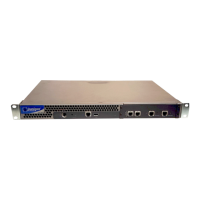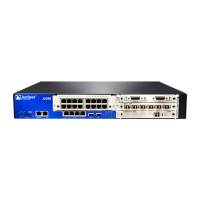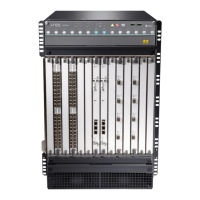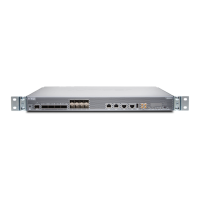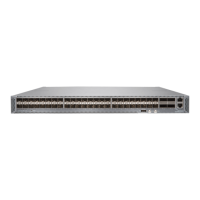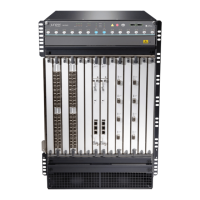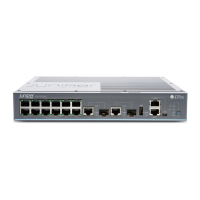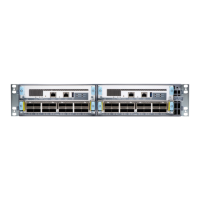unit 0 {
vlan-id 10;
}
}
ge-0/0/2 {
unit 0 {
vlan-id 20;
}
}
ge-0/0/3 {
unit 0 {
vlan-id 30;
}
}
[edit dynamic-profiles]
green_vpls_pw_1 interfaces $junos-interface-ifd-name {
unit $junos-underlying-unit-number {
vlan-tags outer 200 inner 100;
}
}
NOTE: This is not a complete router configuration.
With this configuration, broadcast packets inside frames arriving with VLAN identifier 10
on ge-0/0/1 are normalized to a frame with VLAN identifier 100. The broadcast packet
and frames egressing ge-0/0/2 or ge-0/0/3 have this VLAN value swapped to 20 and
30 respectively, according to the interface configuration. Frames egress the VPLS
pseudowire in routing instance green with an outer VLAN tag value of 200 pushed on top
of the normalized value.
CE Routers Without Dynamic Profiles
You can apply a dynamic profile to an entire VPLS configuration, not just a neighbor.
Consider the following configuration, which does not use dynamic profiles to manipulate
VLAN identifiers on a customer edge (CE) router with VLAN identifier 100:
[edit routing-instances]
green {
instance-type vpls;
interface ge-0/0/1.1;
interface ge-0/0/2.1;
interface ge-0/0/3.1;
vlan-tags outer 200 inner 100;
protocols vpls {
vpls-id 10;
neighbor 10.1.1.20;
}
{...more...}
}
[edit interfaces]
Copyright © 2012, Juniper Networks, Inc.66
Junos OS 12.1 MX Series 3D Universal Edge Routers Solutions Guide
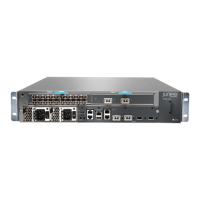
